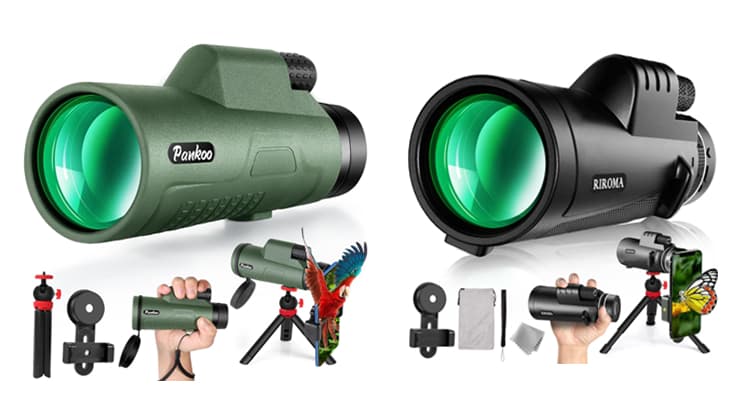When it comes to choosing a monocular for long-distance observation, selecting the right magnification and objective lens diameter is essential.
In this article, we’ll compare the advantages and drawbacks of two popular options: the 12×50 and 40×60 monoculars, helping you determine which one is better suited to your needs and preferences.
Understanding Magnification and Objective Lens Diameter
Before diving into the comparison, let’s briefly review what magnification and objective lens diameter mean and how they impact your viewing experience. Magnification refers to how much closer distant objects appear compared to the naked eye, while objective lens diameter determines how much light the monocular can gather for brighter images.
The Case for 12×50 Monocular
The 12×50 monocular offers a good balance between magnification and light-gathering capabilities. With 12x magnification, this monocular brings distant objects closer, making it ideal for observing wildlife, landscapes, and sporting events. The 50mm objective lens diameter ensures adequate light transmission, resulting in clear and bright images even in low-light conditions.
One of the main advantages of the 12×50 monocular is its versatility. The 12x magnification provides sufficient detail for most long-distance observations without sacrificing a wide field of view. Additionally, the 50mm objective lens diameter strikes a good balance between light-gathering capabilities and portability, making it suitable for various outdoor activities.
The Appeal of 40×60 Monocular
On the other hand, the 40×60 monocular offers significantly higher magnification, allowing for even closer views of distant objects. With 40x magnification, this monocular excels in long-distance observation, making it ideal for surveillance, scouting, and astronomical viewing. The 60mm objective lens diameter ensures ample light transmission, resulting in bright and detailed images even at extreme magnifications.
The main advantage of the 40×60 monocular is its unmatched magnification power, which allows users to observe distant objects with exceptional clarity and detail. This makes it particularly useful for specialized applications where maximum magnification is required, such as birdwatching, wildlife observation, and stargazing.
Considerations for Practical Use
While both the 12×50 and 40×60 monoculars offer unique advantages, there are several factors to consider when choosing between them. Higher magnification may result in a narrower field of view and increased image shake, especially when viewing handheld.
Additionally, larger objective lens diameters contribute to bulkier and heavier designs, making the 40×60 monocular less portable and more challenging to use for extended periods.
Conclusion
In conclusion, the choice between the 12×50 and 40×60 monoculars ultimately depends on your specific needs and preferences. The 12×50 monocular offers a versatile balance of magnification and light-gathering capabilities, making it suitable for general-purpose outdoor activities.
On the other hand, the 40×60 monocular excels in long-distance observation, providing unmatched magnification power for specialized applications.
Consider factors such as intended use, portability, and viewing stability when making your decision. Whether you opt for the versatility of the 12×50 monocular or the magnification power of the 40×60 monocular, both options offer exceptional optical performance and endless opportunities for exploration and discovery in the great outdoors.





